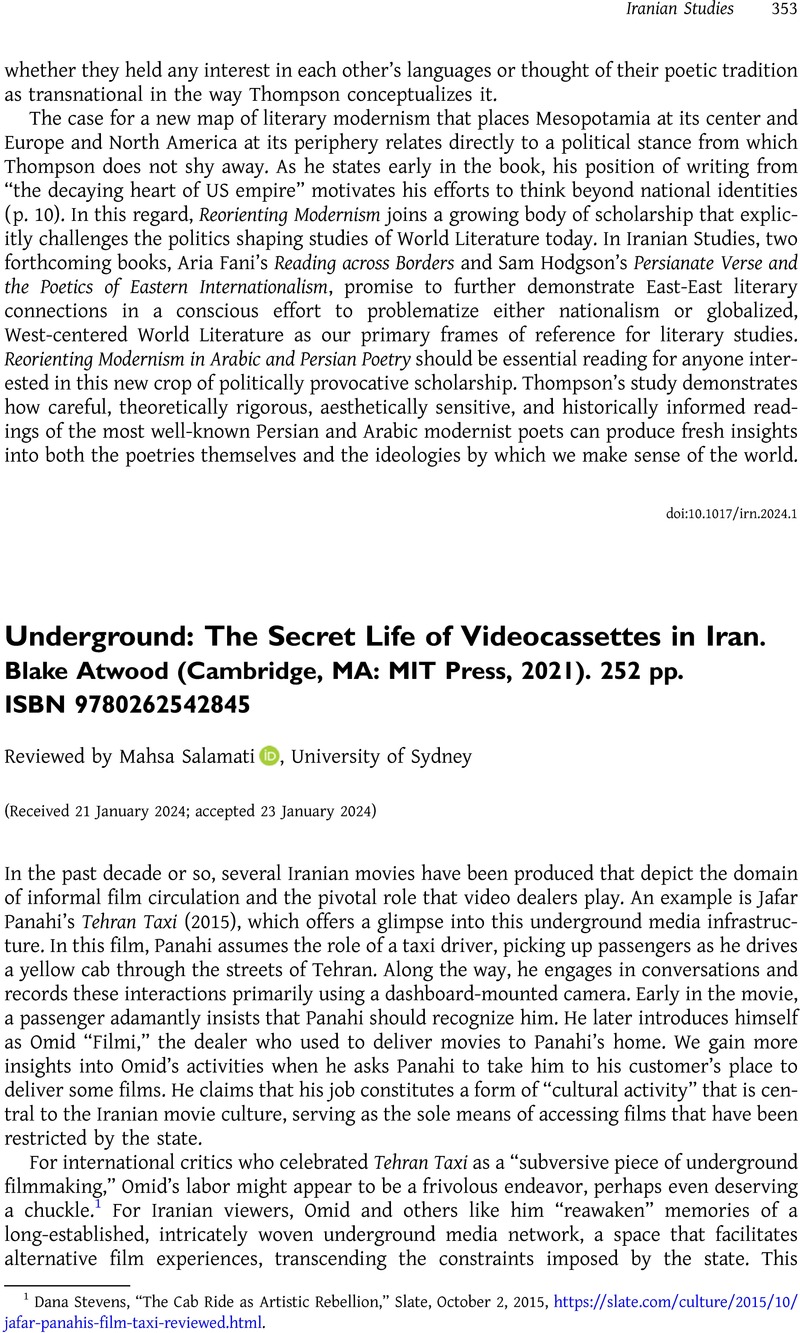No CrossRef data available.
Published online by Cambridge University Press: 28 February 2024

1 Dana Stevens, “The Cab Ride as Artistic Rebellion,” Slate, October 2, 2015, https://slate.com/culture/2015/10/jafar-panahis-film-taxi-reviewed.html.
2 Atwood underscores that the underground had a presence prior to videocassettes, but the technology played a role in shaping a more cohesive underground for those engaging in movie distribution (11).
3 Philip, Kavita, “Keep on Copyin’ in the Free World? Genealogies of the Postcolonial Pirate Figure,” in Postcolonial Piracy: Media Distribution and Cultural Production in the Global South, ed. Eckstein, Lars and Schwarz, Anja, 149–178 (Bloomsbury, 2014)CrossRefGoogle Scholar.